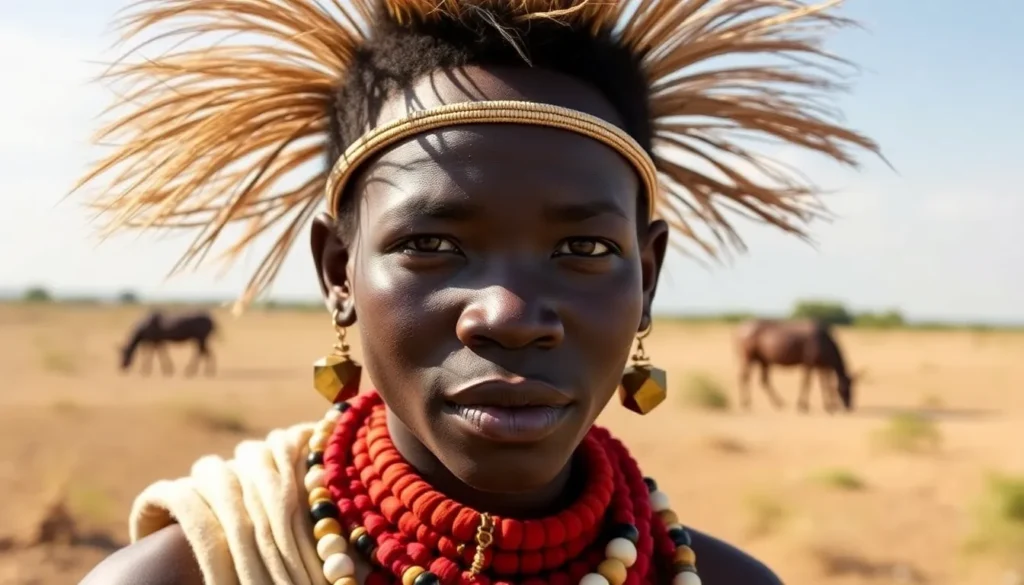Most Fascinating African Tribes to Discover

- 1. Himba: The Red-Hued Nomads
- 2. San People: The Original Inhabitants
- 3. Nuba: Warriors of the Sudan
- 4. Zulu: The Famous Warriors
- 5. Tuareg: The Blue Men of the Sahara
- 6. Dinka: The River People
- 7. Mursi: Body Art and Agriculture
- 8. Turkana: The Colorful Nomads
- 9. Surma: The Warriors of the Omo Valley
- 10. Maasai: The Iconic Pastoralists
- 11. Pygmies: The Forest Dwellers
Africa is a continent full of contrasts and contradictions, often regarded as one of the most impoverished regions of the world, yet simultaneously, it boasts an unparalleled richness in biodiversity, culture, and history. For anthropology enthusiasts and cultural explorers, Africa is a treasure trove of unique tribes, each with its own set of customs, beliefs, and languages. In this article, we will embark on a captivating journey through some of the most fascinating African tribes, revealing their distinctive characteristics and cultural heritage.
1. Himba: The Red-Hued Nomads
Location: Northern Namibia.
Religion: Monotheistic, worshiping the god Mukuru.
Interesting Facts: The Himba are a semi-nomadic tribe known for their pastoral lifestyle and traditional practices that have remained unchanged for centuries. Their most notable feature is the reddish hue of their skin, which comes from a mixture of ochre, butterfat, and herbs used as both sun protection and skincare. The arrival of tourism has begun to alter their lifestyle, yet they remain fiercely proud of their heritage.
2. San People: The Original Inhabitants
Location: Botswana, Namibia, South Africa, Angola.
Interesting Facts: Known as Bushmen, the San have survived for thousands of years through hunting and gathering. However, in the 1990s, the Botswana government began evicting them from their ancestral lands in the Central Kalahari Game Reserve. In a landmark ruling on December 13, 2006, the Supreme Court stated that their removal was unconstitutional, yet challenges persist, with ongoing restrictions on their access to water and resources, making their situation precarious.
3. Nuba: Warriors of the Sudan
Location: Sudan.
Religion: Islam and shamanism.
Interesting Facts: The Nuba people are renowned for their agricultural practices and athletic competitions, which serve as a way to display strength and prowess. Both men and women adorn their bodies with scarifications, which hold cultural significance, representing beauty and bravery.
4. Zulu: The Famous Warriors
Location: South Africa, Zimbabwe, Zambia, Mozambique.
Interesting Facts: The Zulu are one of the most well-known African tribes, with a social structure that traditionally places men as heads of households while women manage the home. They practice polygamy, where the number of children signifies a man's status. Their vibrant music and unique dance styles, characterized by energetic movements, add to their cultural richness.
5. Tuareg: The Blue Men of the Sahara
Location: Algeria, Libya, Niger, Mali, Morocco, Burkina Faso.
Religion: Syncretic Islam with animist beliefs.
Interesting Facts: The Tuareg are known for their striking indigo clothing and nomadic lifestyle, often moving in large family units across the desert. They possess a unique script called Tifinagh, allowing them to preserve their history and culture through written language.
6. Dinka: The River People
Location: Sudan.
Religion: Monotheistic, worshiping Nhialac.
Interesting Facts: The Dinka people inhabit the banks of the Nile River, relying on fishing in addition to farming and pastoralism. Their society is organized into 21 groups, each led by a chief. Dinka women often wear goat skin skirts, while men dye their hair red, showcasing their cultural identity.
7. Mursi: Body Art and Agriculture
Location: Ethiopia.
Religion: Animism.
Interesting Facts: The Mursi are primarily cattle herders and farmers, known for their elaborate body paintings and scarifications. Women often wear clay plates in their lips and ears, with the size of these adornments reflecting beauty and social status. Their body art serves as a means of attraction and self-expression.
8. Turkana: The Colorful Nomads
Location: Kenya, Sudan.
Interesting Facts: The Turkana are pastoralists known for their vibrant beadwork and traditional attire. They practice polygamy, although the high bride price can limit marriages. Their culture emphasizes the significance of livestock, with men often sitting on traditional stools called ekicholong, adorned with colorful accessories.
9. Surma: The Warriors of the Omo Valley
Location: Ethiopia.
Interesting Facts: Also known as the Suri, the Surma are primarily pastoralists and are recognized for their elaborate scarifications, which symbolize beauty for women and bravery for men. Their traditional competitions, known as Donga, involve stick fighting to demonstrate strength and masculinity.
10. Maasai: The Iconic Pastoralists
Location: Kenya and Tanzania.
Interesting Facts: The Maasai are a nomadic tribe whose status is traditionally linked to the size of their livestock and number of children. Their homes are made from cow dung and grass, and they are known for their striking red clothing and vibrant beadwork. Their jumping dance, called adumu, is a significant cultural expression during ceremonies.
11. Pygmies: The Forest Dwellers
Location: Congo.
Religion: Animism, Catholicism, Islam.
Interesting Facts: The Pygmies are famous for their short stature, averaging less than 1.5 meters. They rely on hunting with nets and arrows, gathering fruits and honey. Their intricate knowledge of the forest and its resources allows them to thrive in their environment, often engaging in barter with neighboring tribes.
These are just some of the most intriguing tribes across Africa, each one holding a wealth of cultural heritage and traditions that continue to evolve in the modern world. As we explore these diverse societies, it becomes evident that Africa's ethnic richness is a profound tapestry woven through centuries of history, resilience, and adaptation.
To further immerse yourself in the fascinating world of African tribes, check out this insightful video that delves into their unique customs:





Deja una respuesta